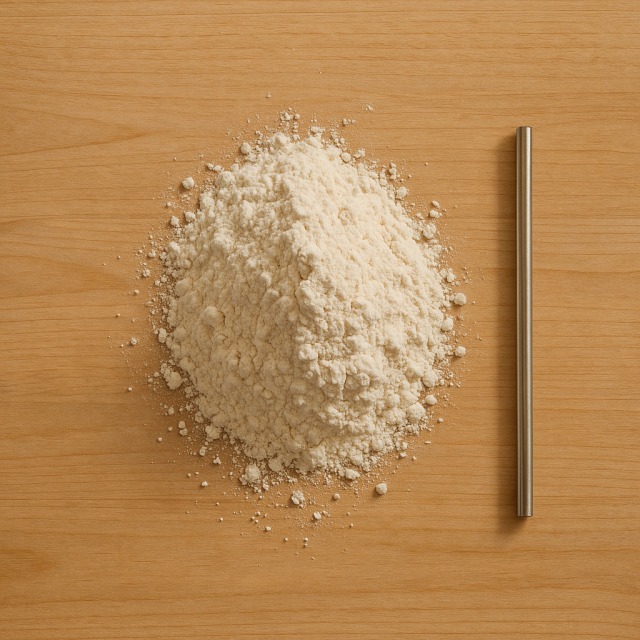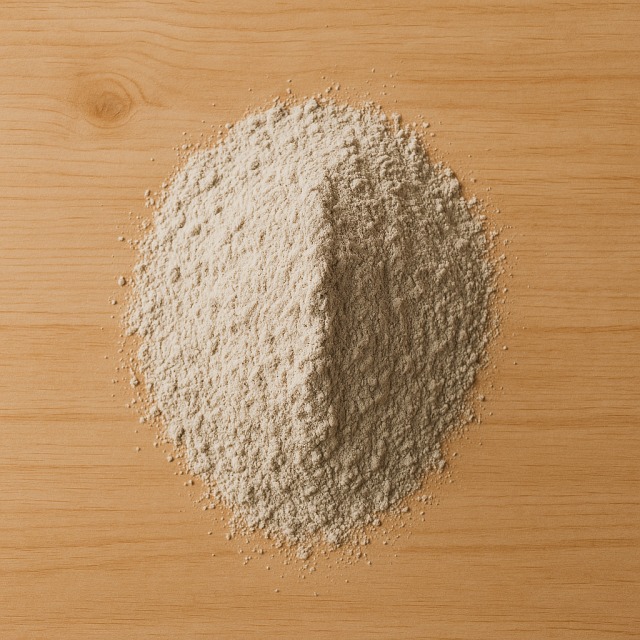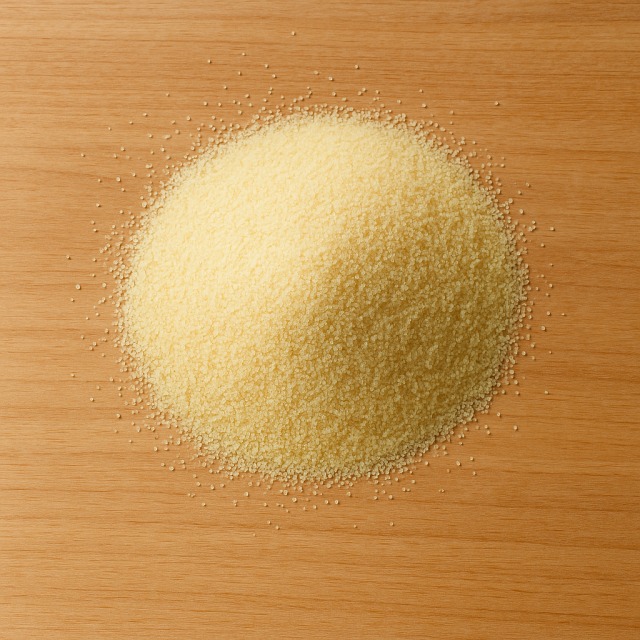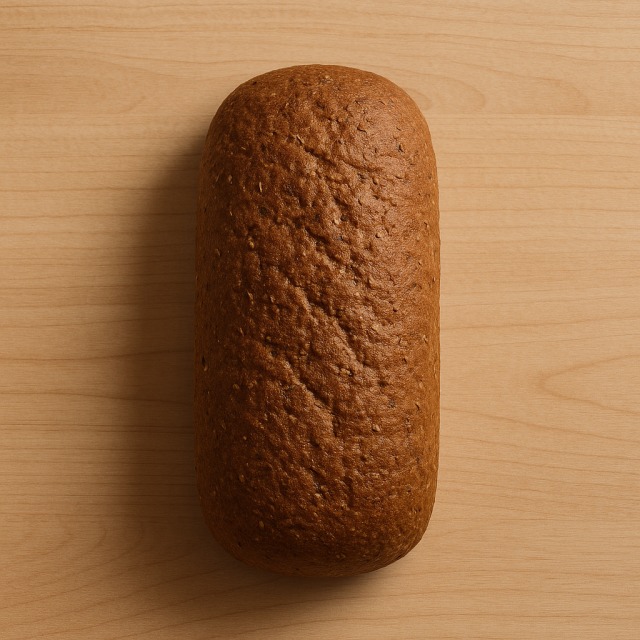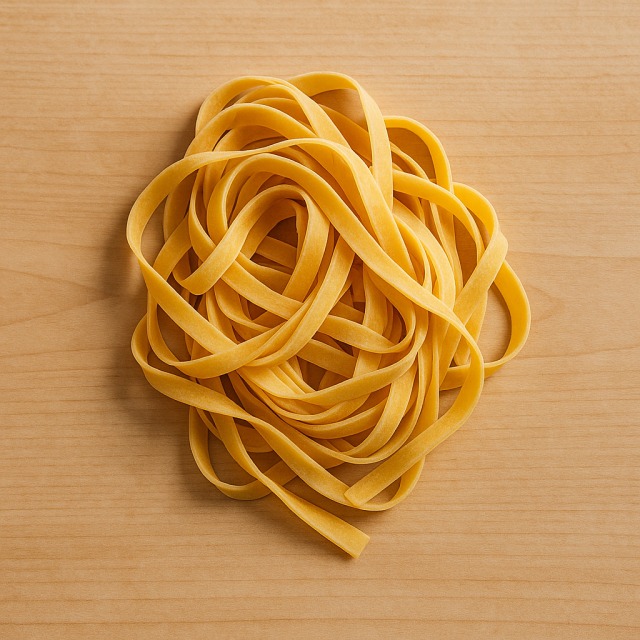Calorie Chart / Trimmings / Wholemeal flour
How Many Calories Are in Wholemeal flour?
Calculation of the nutritional value & Recommended Dietary Intake of wholemeal flour
For g and a calorie requirement of kcal
| Calories 340 kcal | Proteins 12 g | Lipids 2 g | Carbohydrates 69 g |
| 17% | 16% | 3% | 25% |
Health benefits of wholemeal flour

Wholemeal flour - 100g
Calories 340 kcal
Proteins 11.5 g
Lipids 2 g
Carbohydrates 69 g
Wholemeal flour delivers around 340 calories per 100 g, which places it in the moderate-to-high-calorie family of cereal products. Even though the calories are significant, they come largely from complex carbohydrates that release energy gradually and help avoid the sharp blood-sugar spikes sometimes triggered by low-fiber white flour. These calories, therefore, provide sustained fuel for the brain and muscles.
Thanks to its intact bran, wholemeal flour is naturally rich in dietary fibre (≈10 g/100 g). This fibre slows the absorption of calories, prolongs satiety, and contributes to good digestive health. A plate that contains wholemeal flour often feels more filling than an equivalent dish made with refined flour, even if the total calories are similar, which can be useful for weight management.
The germ fraction brings valuable micronutrients: B-vitamins (especially B1, B3, and folate), iron, magnesium, manganese, zinc, and selenium. These nutrients help the body convert calories into usable energy, support the immune system, and fight oxidative stress. Because of that nutritional density, many dietitians describe wholemeal flour as a smart way to ‘invest' your daily calories rather than ‘spend' them on empty energy sources. In short, the ingredient may be calorie-dense, yet the quality of those calories makes it a worthy choice for athletes, active people, and anyone aiming for balanced eating.
Tips for incorporating wholemeal flour into a balanced diet
To integrate wholemeal flour into a balanced diet without overshooting daily calories, start by replacing one-third of the white flour in family recipes. Whole-grain crêpes sweetened with mashed banana and a spoon of almond butter provide flavor, fibre, and controlled calories for breakfast. If you bake bread at home, pair a slice of warm wholemeal loaf with smashed avocado, tomato, and a squeeze of lemon; the healthy fats help stabilize the calories from the starch.
For savory meals, try a thin wholemeal pizza base topped with tomato sauce, oregano, and florets of broccoli. You will obtain a satisfying plate in which the calories are balanced between carbohydrates, vegetables, and a modest amount of cheese. Wholemeal flour also works well in pancakes served alongside a bowl of low-fat yogurt and fresh apple slices—an easy snack that keeps overall calories in check while delivering proteins and extra vitamins.
When counting calories, watch portion size: 20 g of raw wholemeal flour (about two tablespoons) adds roughly 68 calories to a batter—helpful information when adjusting macros for sports nutrition. In soups, a spoonful of wholemeal roux can thicken the broth while increasing fibre without dramatically raising calories. Finally, remember that combining this flour with a protein source such as grilled chicken breast or chickpeas makes the meal more satiating, so you are less tempted to consume excess calories later in the day.
Frequently Asked Questions
- How many calories are in wholemeal flour?
- There are 340 kcal per 100 g.
- Is wholemeal flour lower in calories than white flour?
- No, the calories are comparable, but wholemeal flour provides more fibre and micronutrients per calorie.
- Do the calories change after baking bread?
- The absolute calories remain the same; baking merely redistributes water, so a finished loaf may appear higher in calories per gram because moisture is lost.
- Can wholemeal flour help control calories during weight management?
- Yes. Its high fibre content increases satiety, which can lead to a spontaneous reduction in overall calories consumed throughout the day.
- What is the best flour ratio for keeping calories moderate in cakes?
- Substituting 30–50% of refined flour with wholemeal flour boosts nutrients without drastically changing texture or calories, offering a good compromise for light desserts.
Similar foods
Information provided by Calorie Menu may contain inaccuracies or errors. It cannot, under any circumstances, substitute medical advice or medication.
